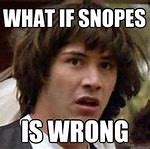This question fascinates me.
So as a folklore buff, I did some digging.
 |
| A classic urban legend--Bloody Mary. |
Trevor J. Blank, an assistant
professor of Communications at a New York State University, who studies
folklore and legends gives a concise description of what an urban legend is and how it works.
He explains—
They are “Fictional stories
that have some kind of believable component.”
These stories seem credible
because they supposedly happened to “a friend of a friend” that the listener
knows or has heard about.
But this source is always
just far enough away—they cannot be reached to verify or confirm the “truth” of
the claims.
This element is what makes
urban legends different than rumors—which tend to be about people the teller
knows.
Blank points out that an
urban legend often has elements of truth, but they distort it to create more
“intrigue.”
Ghost stories use this same
ploy.
Jan Harold Brunvand, in his
book, Be Afraid, Be Very Afraid
states urban legends are believed because they are combined with the “details
of real life.”
Brunvand points out that they are
packed with “local details.” As well as dates and names, etc. are given to make
them seem real.
The following ghost story is
a classic example of an urban legend that has been shared for generations as an
actual event.
The Ghost in Search of . . .
In 1949, Dr. Phillip Cook,
while attending a medical meeting, heard Dr. S. Weir Mitchell from New York
relate a story that happened to him in 1912.
I was sitting in my office
late one night when I heard a knock on my door. I discovered a little girl on
my doorstep. She pleaded with me to come to her home to attend someone who was ill.
I told her I was almost
retired and no longer did house calls. But she was in such distress I agreed to
go. I wrote down the name and the address.
I got my bag and coat, but
when I returned to the door, she was gone. But since I had the address, I went
to this home.
When I got there, a woman
came to the door in tears. I asked for the patient in need of medical
attention.
She told me I was too late for her little daughter had just died. She then invited me in. I saw the patient
lying dead in her bed. It was the little girl who had called at my house.
Many versions of this story
were told orally before it was first published in the 1950s-- people swore it
was true.
The Crushing
In 1979, a coworker shared
this story.
In a Kansas rail yard, a
night switchman was caught in the couplers and crushed between two cars. These couplers went straight through his mid-section.
But this terrible accident
didn’t kill this man immediately. The other workers at the scene knew they
would have to extract him from the two cars by uncoupling them—he then would
bleed to death.
Since he had not lost
consciousness, they called his wife and children to come. The family said their
tearful goodbyes, and when the cars were separated, he died.
The teller of this story
insisted it was true, a trusted friend knew a family member—he knew their
names.
But this scenario, regardless
of how it happens is medically impossible.
This urban legend has been
around for half a century even though today it is presented as recent. It has spread like wildfire over the years,
taking on details that reflect the region it is told in.
It is often referred to as
“The Last Kiss.”
Various versions of this
legend use subway cars, machinery, car accidents, etc.
A Mel Gibson film, Signs even
uses this classic urban legend to explain how his character lost his wife.
I share another classic urban
legend, Drip, Drip, Drip here.




No comments:
Post a Comment